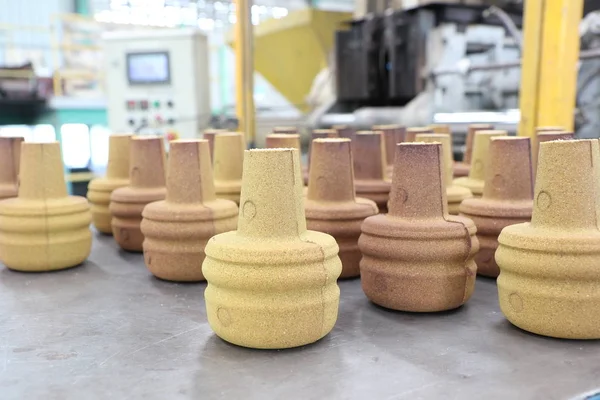Shell Mold Casting Process
The shell mold casting process is also known as the shell type casting process. It is a consumable mold casting process that uses resin-covered sand to form the mold. In the shell mold casting process, the mold is made like a shell. Thin or hollow molds are used so that the mold is lighter and the mold handling is easier.
When making thin molds, phenolic resin with a small amount of silica sand added is used as the mold material. Making shell casting requires the use of metal models, furnaces, sand-resin mixtures, dump boxes, and molten metal. Shell casting allows the use of ferrous and non-ferrous metals, and the most commonly used molten metals are gray cast iron, ductile iron, carbon steel, alloy steel, stainless steel, aluminum alloys, and copper alloys.
Shell Mold Casting Steps
1. Pattern Making – Make a two-piece metal pattern to conform to the shape of the desired pattern.
2. Mold Making – First, heat each half mold to 175-370°℃ and apply lubricant to facilitate easy separation from the formed pattern. Next, clamp the heated pattern on the dump box. Turn the dump box upside down to allow this sand-resin mixture to be applied to the pattern. The heated pattern partially solidifies the mixture, which now forms a shell around the pattern. Each mold half and the surrounding shell are completely cured in the oven and then the shell is ejected from the pattern.
3. Mold Assembly – The two shell halves are joined together and clamped securely to form a complete shell mold. If any cores are required, they are inserted before closing the mold. The shell mold is then placed in a flask and supported by the backing material.
4. Pouring – The mold is clamped securely together while molten metal is poured from the ladle into the gating system and fills the mold cavity.
5. Cooling – After the mold is filled, the molten metal is allowed to cool and solidify into the shape of the desired casting.
6. Casting Removal – After the molten metal cools, the mold is broken and the casting is removed. A trimming and cleaning process is performed to remove any excess metal from the feed system and separate small sand particles from the mold.
Features of Shell Molding Process:
· In Shell Molding Process, the thickness and weight of the mold are small
· Shell mold productivity is very high,
· Due to the low porosity of the mold, straight-through risers must be used.
· It is only suitable for circular and symmetrical jobs.
· Highly complex shapes cannot be formed using the shell casting method.
· This process produces more dimensionally accurate castings than other sand casting processes.
· Smaller draft angles can be used.

